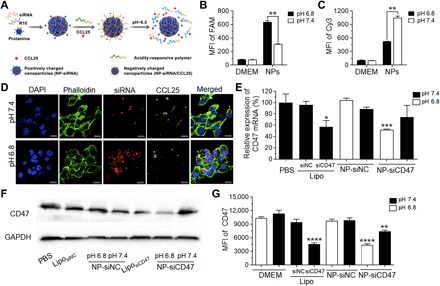Fig. 2. Tumor acidic environment facilitates CCL25 and CD47 siRNA progressive delivery and enhances the target gene silencing efficiency.

(A) Schematic illustration of CCL25 and CD47 siRNA coloaded tumor acidity–responsive nanoparticle (NP-siCD47/CCL25). NP-siCD47/CCL25 sequentially release CCL25 in tumor stroma and CD47 siRNA into tumor cells in the acidic environment of tumor. (B and C) Quantitative evaluation of cellular uptake of CD47 siRNA (B) and CCL25 (C) by 4T1 cells after incubation with NP-siCD47/CCL25 at pH 7.4 or 6.8 for 30 min using flow cytometry (n = 4). The CD47 siRNA and CCL25 were labeled with FAM and Cy3, respectively. MFI, mean fluorescence intensity; DMEM, Dulbecco’s modified Eagle’s medium. (D) Confocal laser scanning microscopy (CLSM) images of the 4T1 cells after incubation with NP-siCD47/CCL25 at pH 7.4 or 6.8 for 30 min. The CD47 siRNA and CCL25 were labeled with Cy5 (red) and Cy3 (yellow), respectively. The cell membrane and nuclei were stained with phalloidin–FITC (green) and 4′, 6-diamidino-2-phenylindole (DAPI) (blue), respectively. Scale bar, 10 μm. (E) Relative mRNA levels of CD47 in 4T1 cells upon treatment with NP-siCD47/CCL25 and other controls at pH 7.4 or 6.8 for 24 hours were assayed by quantitative real-time PCR. The siRNA concentration was 100 nM. The data were averaged from two independent experiments ± SEM. (F) CD47 protein levels were analyzed by Western blotting using anti-CD47 antibody. The 4T1 cells were treated with NP-siCD47/CCL25 and other controls at pH 7.4 or 6.8 for 48 hours. The siRNA concentration was 100 nM. GAPDH, glyceraldehyde-3-phosphate dehydrogenase. (G) The CD47 levels on cell surface of 4T1 cells continuously incubated with NP-siCD47/CCL25 and other controls at pH 7.4 or 6.8 for 4 days were determined by flow cytometry (n = 4). Data present means ± SEM. *P < 0.05; **P < 0.01; ***P < 0.001; ****P < 0.0005.
